Gavin Turk @ The Heong Gallery
6 October 2022 – 5 February 2023
In Search of Ariadne
Ariadne, an unsung heroine of Greek mythology. The woman, without whom, Theseus would not have defeated the Minotaur. Left abandoned and asleep by Theseus on the island of Naxos despite her love for him. Theseus sailing on to Athens to a hero’s welcome.
Focussing on the heroic acts of the male figures, the role and stories of women have been largely ignored in the retelling of Greek mythology. Recently however, authors such as Natalie Haynes in her book ‘A Thousand Ships’ and Jennifer Saint’s ‘Ariadne’ have begun to redress this and have started to give the women of Greek mythology a voice.
‘In Search of Ariadne’ is therefore a really interesting choice.
The exhibition coincides with the installation of the public sculpture ‘Ariadne Wrapped’ outside the train station in Cambridge.
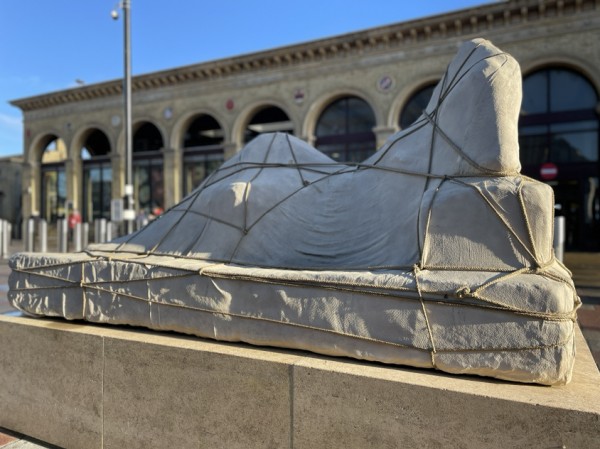
‘Ariadne Wrapped’ – Gavin Turk (2022)
What does this convey? Our relationship with classical art and architecture runs so deep within Western culture, that despite being covered, the statue clearly eludes to the presence of a reclining woman.
Presented with a classical reclining figure of a woman, I would argue that the viewer would normally focus on the face, the poise and the craftsmanship of the sculpture.
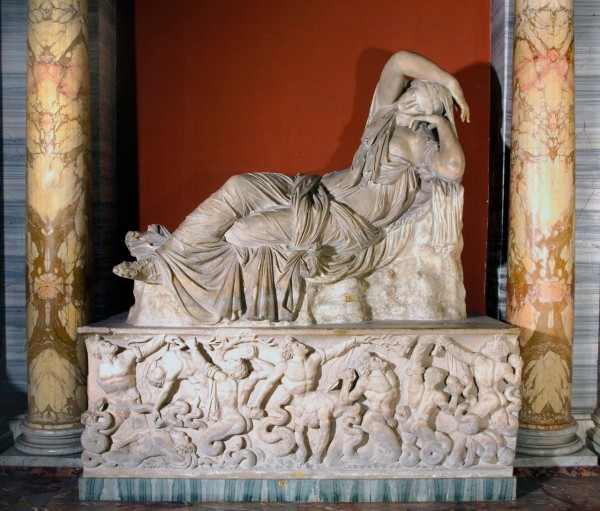
‘Ariadne’ – The Vatican Museum
Turk’s decision to cover her therefore forces the viewer to reflect on other aspects, such as the juxtaposition of materiality and form as well as its significance and meaning; i.e. why the decision to cover her?
Turk himself says that the statue is clearly of a female form, but viewed from a different perspective and that by covering her it imbues the statue with varying points of view and meaning and that these evolve on repeated viewings. But as with most conceptual art, significance and meaning is often subjective and at times elusive.
Two obvious interpretations are that Turk too is conscious of the silencing of the woman’s experience in the telling of Greek mythology. The covering is therefore a literal hiding of a woman from sight. A second, contrasting interpretation, is that the covering and binding is a form of chrysalis and that what we are about to witness is the emergence of a fully-fledged woman, one with presence and purpose.
The relationship between the statue and the surrounding architecture is not accidental. Turk has made no secret (and why should he?) of his admiration of metaphysical art. Georgio de Chirico, a key proponent of this art form, painted squares typical of Italian towns and cities and added objects and statues in unnatural formations often casting long shadows, creating an image that was both instantly recognisable, but also one that was beyond physical reality.
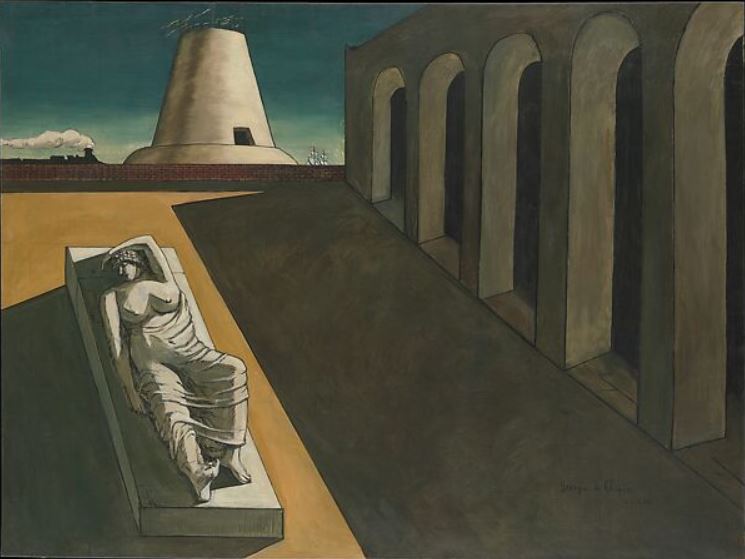
‘Ariadne’ – Georgio de Chirico (1913)
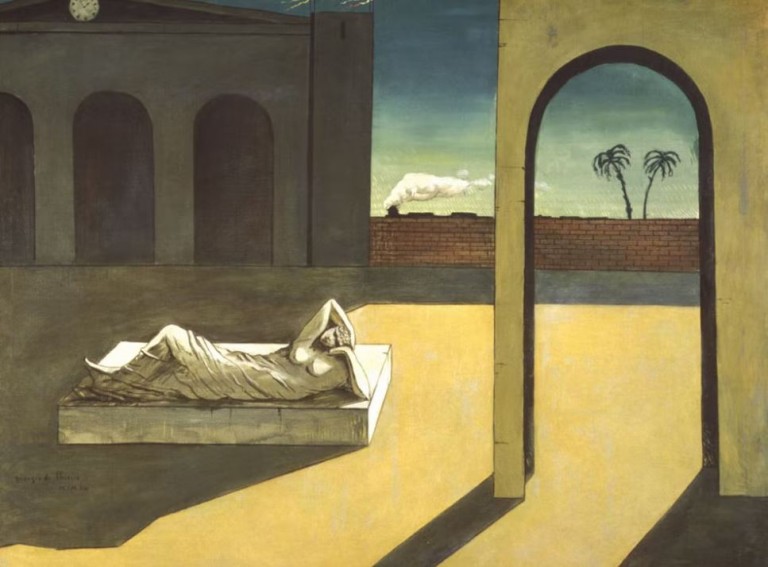
‘The Soothsayer’s Recompense’ – Georgio de Chirico (1913)
The similarities between the colonnades in de Chirico’s paintings and those of the railway station are striking as too is the position of the statue relative to them. The presence of a train in each painting, typical of de Chirico's work, cements this dialogue between classical sculpture, metaphysical art and Turk's interpretation.
Turk’s exhibition at the The Heong Gallery, presents a more complete metaphysical world. The de Chirico connection is more explicit (helped by the bright sunlight casting crisp, deep shadows across the gallery floor) as are the mythological roots.
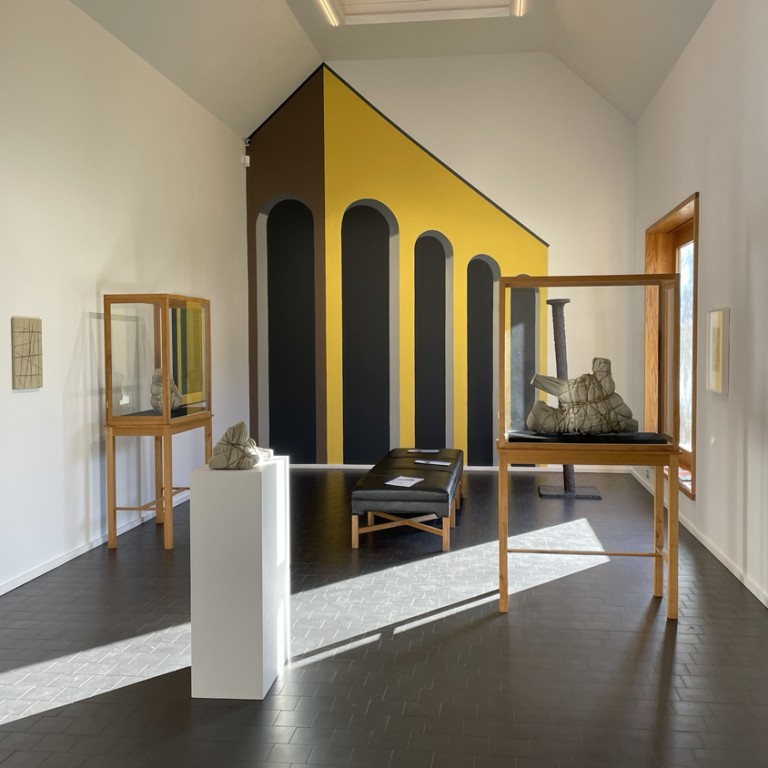
Installation view
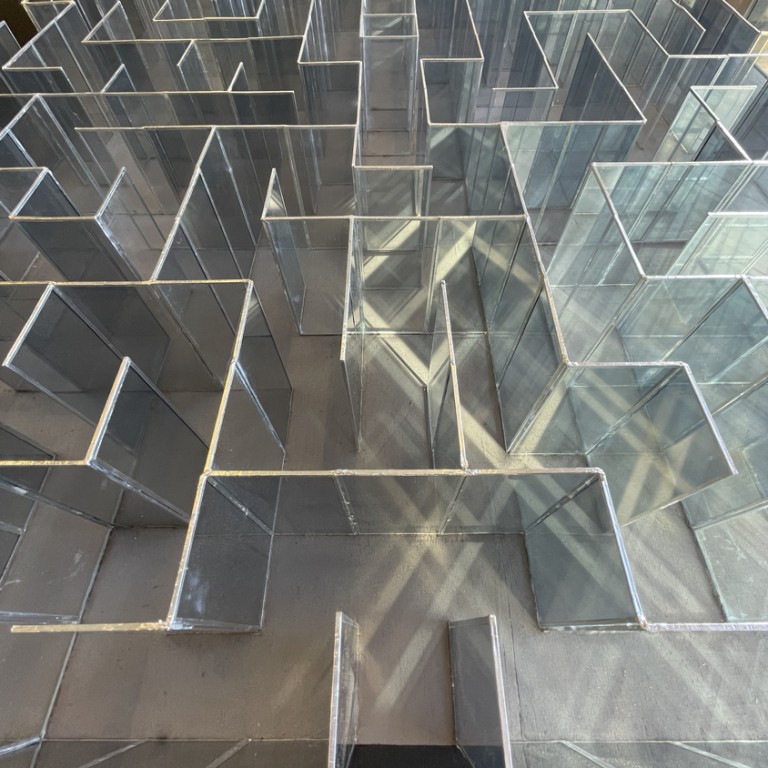
‘The Shining’ (2007)
Ariadne herself takes on different forms as well as different forms being likened to Ariadne.
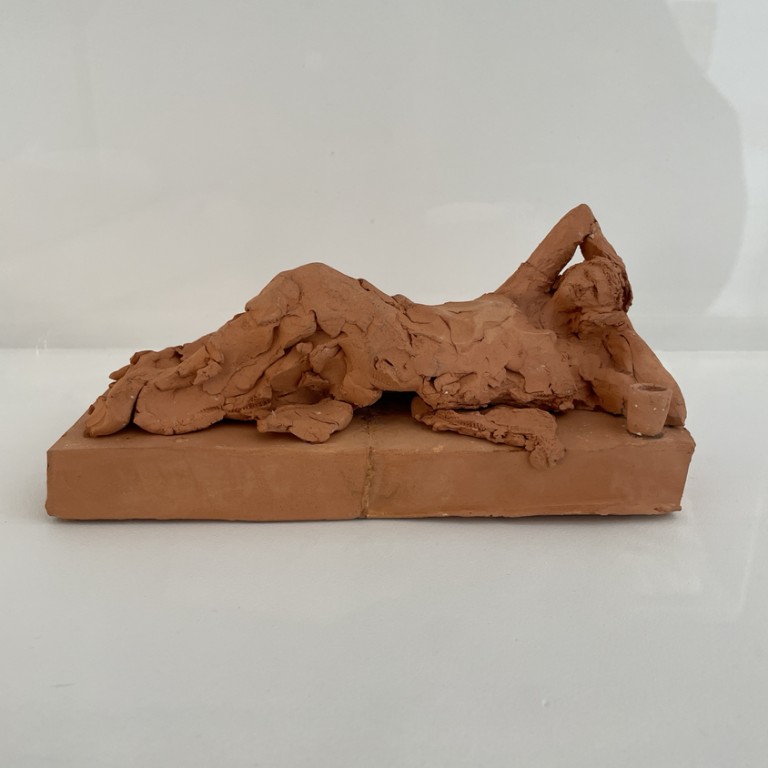
‘Rough Sleeper’ (2003)
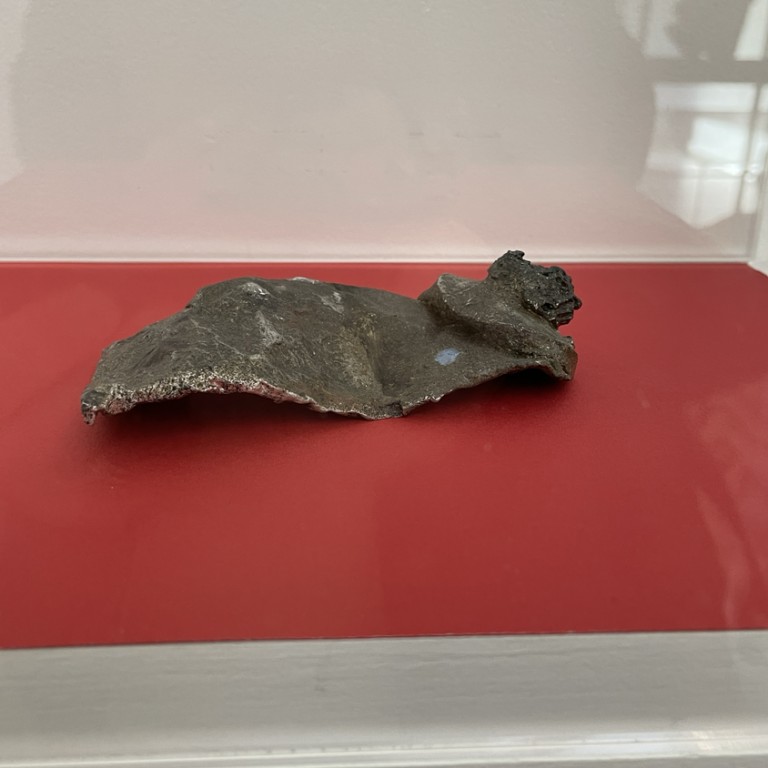
‘Terra Vert’ (2016)
The covering of objects, extended to include other artefacts and pieces, reinforces Turk’s aim of forcing the visitor to view objects from a different perspective.
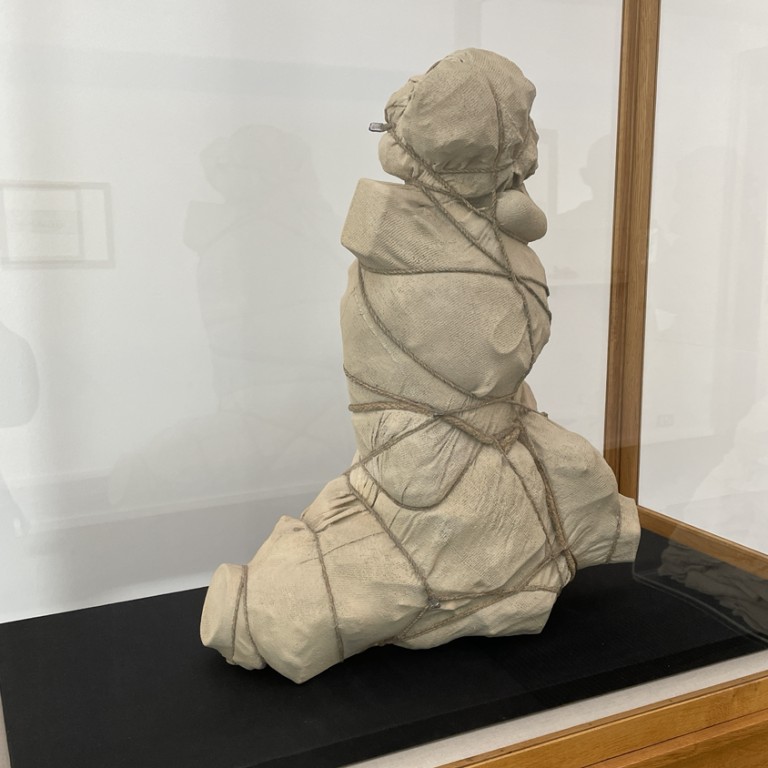
‘Pile (Wrapped Waste)’, (2016)
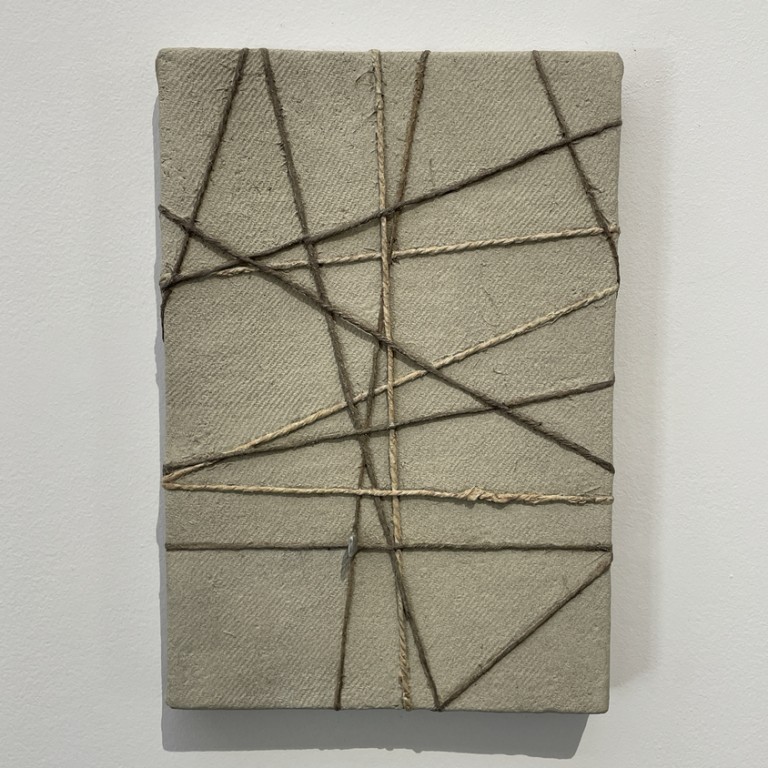
‘Edgar Allen Poe Award (Wrapped Waste)’, (2018)
In a sense this was a de Chirico painting made real. Things are not what they seem. Instead of de Chirico’s contrasting vanishing points, here we have an exhibition where most of the objects are hidden, although of course in this case the forms of hidden objects are the objects themselves. These contradictions are manifest in two other works.
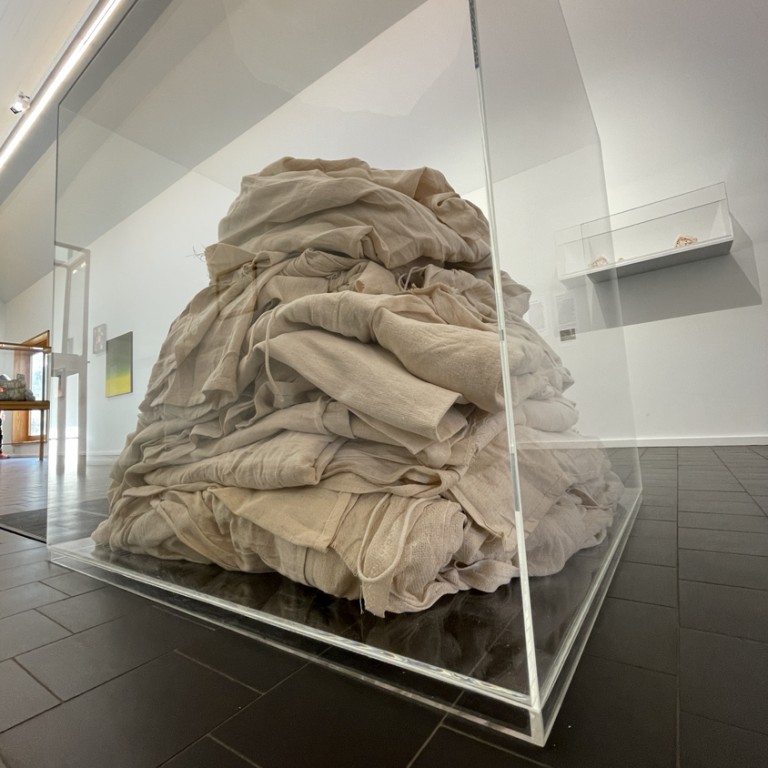
‘ Zeuxis and Parrhasius’ (2003)
The viewer is presented with a pile of dustsheets. Originally each was used to wrap Turk’s works for another exhibition and each carried a label with the name of the work they had been used to wrap. An association was therefore formed and here the viewer rather than speculating, as with ‘Ariadne Wrapped’, about what is inside and wrestling with their subconscious desire to make meaning of the form, is left to ponder the imponderable.
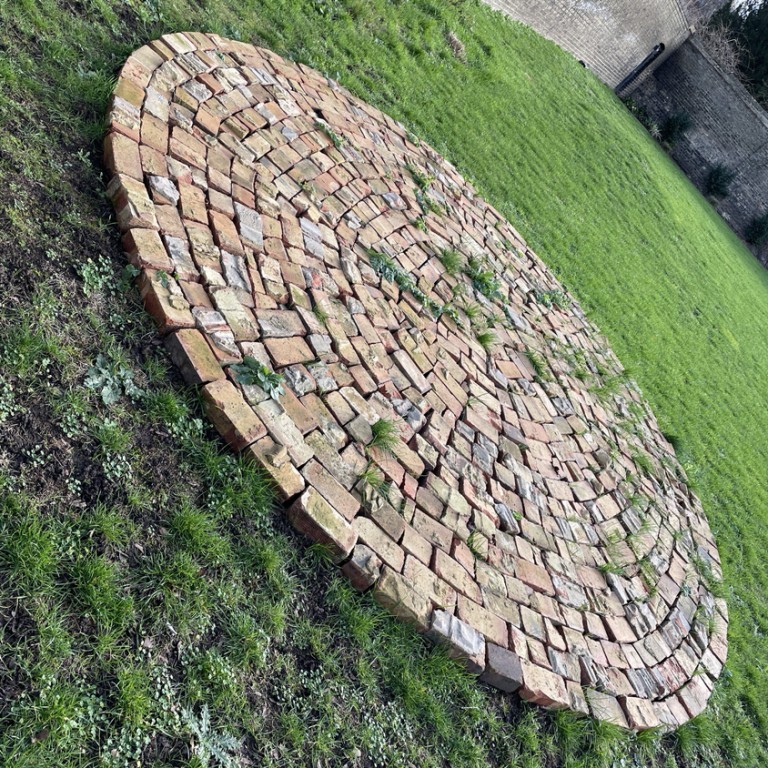
‘Brick Circle’ (2022)
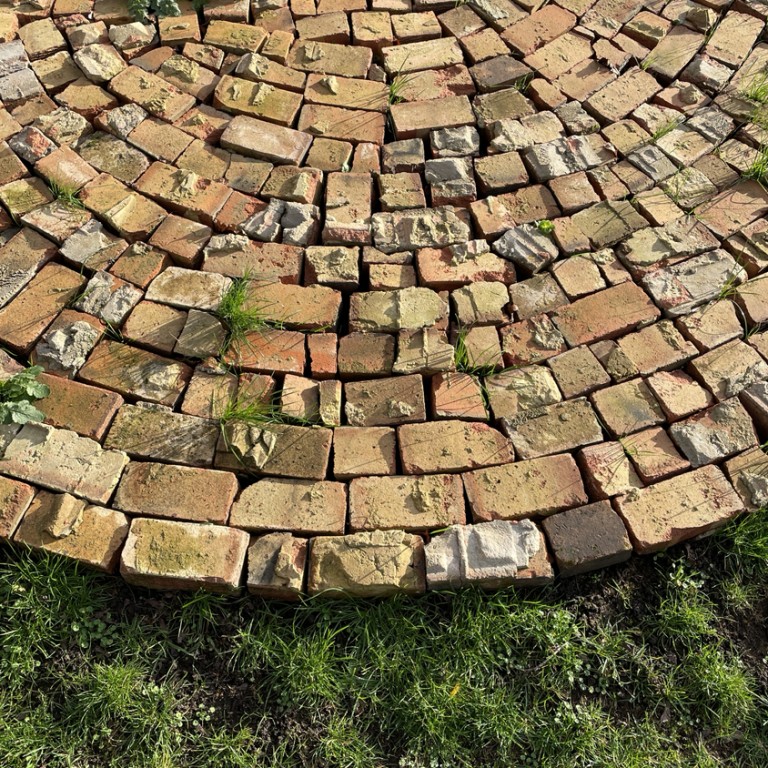
‘Brick Circle’ (2022) detail
Bricks, broken and irregular arranged in a circular form. The possible association with a labyrinth draws the eye to see where the path of bricks lead. They don’t lead anywhere; this is not a spiral. However the labyrinth appears in the negative spaces. The gaps provide the pathway in, through and out of the labyrinth. Scaled up, in which the gaps form paths and corridors with openings to left and right, this would be demonically Cretan.
The exhibition, tied in with the unveiling of the public sculpture, provides us with an opportunity to delve into a conceptual world of Greek mythology, metaphysical art and the mind of an artist who is still at the forefront of what it means to be contemporary.